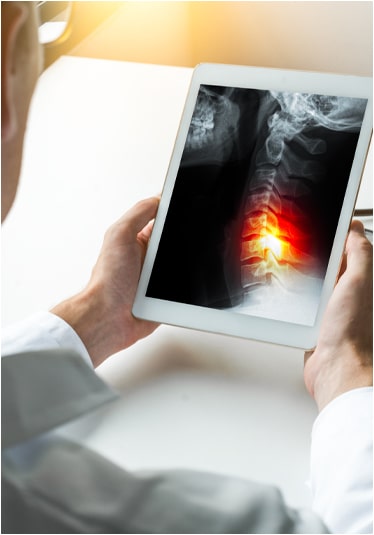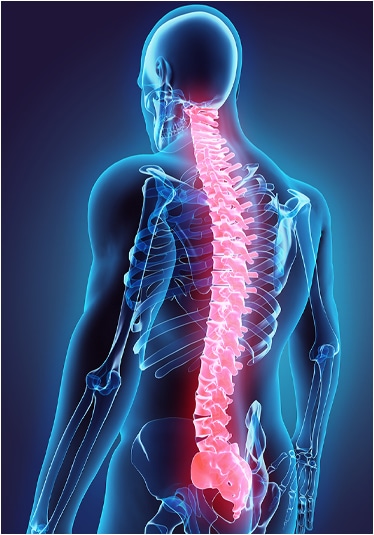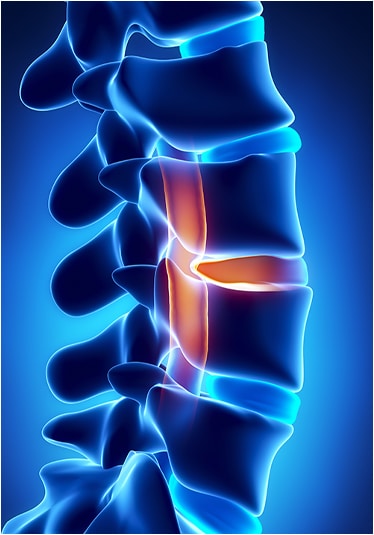
California Spinal Cord Injury Lawyers
Fighting for the rights of clients with spinal cord injuries in Los Angeles and throughout the state
Spinal cord injury (SCI) is usually the result of trauma, most commonly related to motor vehicle accidents, sports injuries, falls, acts of violence, or medical wrongdoing where conditions such as infections are not timely diagnosed or treated. SCI is sudden and dramatic, and happens to about 12,000 people a year, and roughly 1,000 in Southern California. The consequences are life-changing and affect not just the injured, but also his or her family and loved ones.
An injured person with SCI, however, can live a long and healthy life, fully active in work, family and community if: (1) connected to good resources; (2) able to obtain medical care; and (3) imbedded in a community of people who understand living with SCI.
What are some common causes of spinal cord injuries?
Spinal cord injuries can be caused by:
- Medical negligence
- Car accidents
- Workplace accidents
- Acts of violence
- Falls
- Diseases, such as polio or spina bifida
You or your family member’s paralysis may be the result of medical malpractice or negligence, and you may have a case.
The basics of spinal cord injury
A spinal cord injury (SCI) is damage to the spinal cord or nerves at the end of the spinal canal that results in a loss of function, such as mobility and/or feeling. SCI often causes permanent changes in strength, sensation and other body functions below the site of the injury.
The spinal cord is well-protected by the backbone. External trauma can exceed the strength of the backbone. In a medical situation, numerous things can increase pressure on the cord, ranging from space-occupying infections or direct compression by ill-placed instruments, or on occasion, surgeons actually accidentally cut through the cord. While you may hear that a person’s spinal cord was “severed,” that is rarely the case except in knife, gunshot wounds or extreme surgical negligence. In most cases of SCI, the cord is pinched, or bruised, or its blood supply is otherwise compromised.
These mechanisms disrupt the transmission of commands from the brain through the nerves to the muscles below the area of injury, and it also interrupts sensory messages from the body back to the brain. When this happens, the injured person can no longer voluntarily move the affected muscles or control the affected organs.
Types of spinal cord injuries
The spine is divided into four parts: the cervical (top), thoracic (middle), lumbar (lower-middle), and sacral (bottom). The location of the injury on the spine dictates what part of the body is affected.
- Cervical injuries. Cervical injuries may cause quadriplegia, which is paralysis or weakness in both the arms and legs. All areas of the body at or below the level of injury may be affected. Some conditions that can accompany cervical injuries are numbness, breathing problems, bowel, bladder, and sexual dysfunction.
- Thoracic Injuries. Thoracic injuries are less common because the rib cage acts as a sort of protection. Thoracic spinal injuries can cause paraplegia (paralysis in the legs) along with numbness and bowel, bladder, and sexual dysfunction. The hands and arms are not usually affected in this kind of injury.
- Lumbar injuries. Lumbar injuries may result in paraplegia. Numbness along with bowel, bladder, and sexual dysfunction can occur as well. The shoulders, arms, and hand function are usually unaffected.
- Sacral injuries. Sacral injuries primarily cause loss of bowel and bladder function as well as sexual dysfunction. These types of injuries can cause weakness or paralysis of the hips and legs.
The level and severity of the injury determines losses from the injury
One of the important determinants in SCI is the level of injury. This is important because location of a spinal cord lesion determines the functions a person can be expected to retain.
Spinal cord injury affects sensation, movement and control of one’s bodily functions such as bowel and bladder functions. The higher up the spinal cord the injury, the more devastating the degree of impairment. A rough gauge of function and SCI can be made using a schematic, used for sensation loss, called a dermatome map. At each level of injury, the loss can be partial or complete depending on the degree of damage to the cord. Cervical injuries will involve substantial loss of movement and sensation loss in the arms (the higher the level, the greater the loss), all the way down to the bottom of the legs, along with loss of bowel and bladder function. Thoracic SCI involve some, but lesser loss of arms, hands and fingers, and trunk, but still with large loss of ability to move the lower extremities. Almost all SCI injuries affect the legs and feet, as well as bladder, bowel, and sexual function; SCI at the highest levels also affect the lungs.
People who injure their spinal cords in the neck area and severely compromise all four limbs are commonly called quadriplegics (plegia, or paralysis in 4 levels), or quads for short. Persons who have lower (thoracic) and even lower (lumbar) SCIs usually retain arm function and are called paraplegics, or paras.
A very high cervical injury, such as that of actor Christopher Reeve, who had a C2 injury, affects breathing and requires mechanical ventilation. Reeve was unable to move or feel any part of his body except his head; he required assistance for eating, dressing, bathing, hygiene, everything except for piloting his power wheelchair with a sip and puff controller. If persons like Reeve are injured just a few spines lower on their backbone – a matter of a few inches – they retain some ability to move their arms, and perhaps fingers, thus retaining some ability for self-care, and thus more independence.
Levels of spinal cord injury and how they affect movement and sensation
The highest levels of spinal cord injury involve total paralysis of the trunk and arms and legs. People injured at the top of the spinal cord, often referred to as high quads, may require mechanical ventilation and will need 24-hour-a-day assistance to perform daily activities, including management of bowel, bladder, bed mobility, transfers, eating, dressing, grooming, bathing, and transportation. High quads may require a mechanical lift with a sling and may be able to use powered wheelchairs with special controls.
Full body paralysis with some neck and shoulder movement, usually able to breathe without a ventilator. Similar profile as above for the high quad group. People injured at C4 usually require a wheelchair with a power recline and/or tilt. They usually can use a standing table. Total assistance is needed for all tasks of daily living, but they are generally able to communicate needs.
People injured at C5 can raise their arms and bend their elbows but are likely to have some or total paralysis of wrists, hands, trunk, and legs. Many C5s use hand splints. They can speak but breathing endurance is reduced and they may not be able to cough, thus needing help with secretions. They will need assistance with most activities of daily living, but once in a power wheelchair, they can move from one place to another fairly independently. C5s can eat independently if meals are set up. Personal care assistance is needed daily, especially for grooming, bed transfers, and dressing. Some C5s can drive a vehicle with the right specialized gear and training.
Those injured at C6 typically have paralysis in the hands, trunk, and legs. They can speak and use diaphragm, but their breathing will be weakened. They can usually move in and out of a wheelchair and bed with assistive equipment and may also be able to drive an adapted vehicle. They have little or no voluntary control of bowel or bladder and may need help for bowel management, uneven transfers, and bathing. Wrist flexion and hand movement are impaired so some adaptive gear may be helpful. A C6 can usually push a manual chair for short periods of time and do weight shifts without assistance. Personal care is usually required for assistance with activities of daily living.
C7/8 injuries typically cause paralysis of the trunk and legs, but greater arm and hand dexterity remain, including elbow, wrist, and thumb extension. People injured at this level can usually perform most activities of daily living but need assistance with more difficult tasks. They may also be able to drive an adapted vehicle. They have little or no voluntary control of bowel or bladder, but may be able to manage with special equipment. A personal care attendant will still be helpful.
T1-5 injuries usually cause lower trunk paralysis and somewhat limited trunk stability, but full arm and hand function remain. Vital capacity may be somewhat impaired. People injured at these levels are usually able to use a manual wheelchair and can learn to drive a modified car. They also can stand in a standing frame while others may walk with braces
T6-T12 injuries cause paralysis of legs but injured people retain good trunk stability and should be able to cough productively (if abdominal muscles are intact). They usually have little or no voluntary control of bowel or bladder but can usually manage on their own with special equipment. People injured at these levels are usually able to use a manual wheelchair and can learn to drive a modified car. They also can stand in a standing frame while others may walk with braces.
Those injured at L1-S5 have some loss of function in the hips and legs and have little or no voluntary control of bowel or bladder but can usually manage on their own with special equipment. Some may need a wheelchair, but others may be able to walk with braces.
This article does not constitute a guarantee, warranty, or prediction regarding the outcome of your legal matter.
Complete vs. incomplete spinal cord injury
No two spinal cord injuries are exactly alike. Two people who injure their cord at the same level can have very different outcomes. One might recover some ability to walk while the other cannot move a muscle below the injury. Besides level of injury, the other major factor in functional loss is the degree of damage that the cord sustains. How badly was the cord squeezed, crushed, or bruised?
Doctors will assess the injured person to determine the extent of the damage using a detailed chart called the ASIA Impairment Scale to determine remaining motor (movement) function. Through testing ten muscle groups in the elbow, wrist, fingers, hips, knees, ankles, and toes, the physician determines the patient’s motor score. The examining physician will also measure sensation and determine a score using light touch or pinprick across the 28 sensory zones in the body.
If a person has no motor or sensory function, that’s called a complete injury. There are many degrees of incomplete injury.
In many cases of SCI people improve beyond their initial diagnosis. Generally, however, improvement plateaus after 6-18 months.
How an L.A. spinal cord injury lawyer can help your case
If you are considering filing a lawsuit to recover compensation for your injuries, it is important that an investigation into the facts of the case begin as soon as possible to preserve evidence, to get information while memories are fresh, and to avoid losing your right to bring a lawsuit.
You not only have the right to be compensated for your pain and suffering and the loss of enjoyment of life, but, most importantly, you deserve to be free from your new financial hardships. You may no longer be able to work to support yourself or your family, to pay for your mounting medical bills, or to afford the extra costs of hiring help to do what you can no longer do around the house.
Yet in most cases you will face an army of people fighting you to avoid paying you the money you desperately need. In other words, their whole focus is to avoid claims or to settle with you for the least amount of money possible.
The knowledgeable California spinal cord injury lawyers at Heimberg Barr LLP are here to protect the rights of clients suffering from spinal cord injuries from accidents caused by someone else’s negligence. The California SCI attorneys of Heimberg Barr LLP fight for the maximum compensation you and your family need for your future. The firm has obtained millions of dollars on behalf of its clients, including:
- $9 million awarded to a man who became paralyzed after a solo auto accident in the rain that resulted due to negligently designed roadway
- $8.225 million for the victim of negligent unsupervised intraoperative neurophysiologic monitoring (IONM) and negligent spinal surgery, resulting in quadriplegia
- $6 million for a boy who became paralyzed after being dog-piled in the playground because the school failed to implement safety measures and negligently supervised students
- $5 million malpractice settlement for a patient whose undiagnosed epidural abscess after a successful neck surgery resulted in quadriplegia
Why work with Heimberg Barr LLP after an Spinal Cord Injury?
Heimberg Barr LLP as well as its Senior Partner, Steven Heimberg, have received an astounding number of prestigious honors and accolades reflecting these recognition of their legal excellence, the quality of representation of their clients, and how others, both in the legal community and greater society, view the firm as a whole.
Dr. Heimberg has over two decades of experience, which allows him to recognize the full extent of medical issues resulting from spinal cord injuries, uncover hidden facts, decipher complicated medical records, recruit top medical experts, and simplify and communicate the full impact of life altering injuries to juries so that they also understand and can award just damages.
The firm also has years of practice facing down insurance companies and their lawyers. Because they understand the medical and legal issues inside and out, they know how to hold people and insurance companies accountable. They know what it takes to get insurance companies to do their job and pay claims that should be paid. That knowledge combines with a passionate commitment to justice and a rigorous work ethic to form the foundation on which Heimberg Barr LLP is built.
Dr. Steven Heimberg possesses a very rare and dangerous (for his opponents) background. He is a medical doctor and a lawyer. Dr. Heimberg has been named Los Angeles Trial Lawyer of the Year, an honor for which he has been nominated nine times (can only win once). His honors also include being named Best Lawyers and The Wall Street Journal Lawyer of the Year in 2017, Top 100 California Trial Lawyers 10 consecutive years, Top 100 Southern California Super Lawyers for 9 consecutive years, among numerous others.
Steven Heimberg is an experienced litigator who has dedicated his entire career to helping injury victims and their families.
In recognition of his dedication and tireless work for their clients, of its attorneys, Heimberg Barr LLP was voted #1 Medical Malpractice firm in America by The National Law Journal in 2019. The firm is also recognized as Top Tier, the highest distinction given, by Best Lawyers and US News and World Reports in the fields of Medical Malpractice and Personal Injury.
The California spinal cord injury attorneys you know and trust
Living with SCI can be a challenge. Hiring the right California spinal cord injury lawyer to represent you should not be. To schedule a consultation with Heimberg Barr LLP, please call (310) 954-2000 or complete the contact form today.



